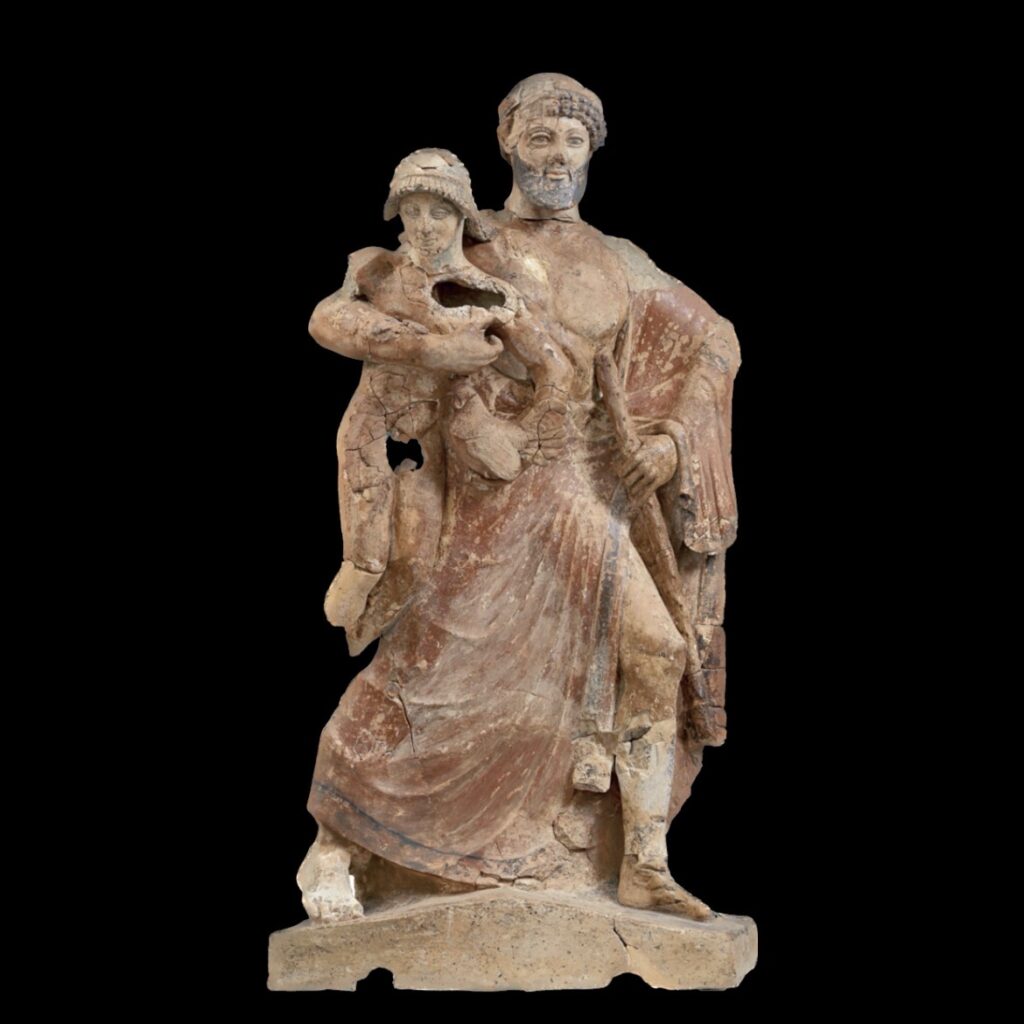The sheer bounty of material from ancient Olympia can be a little overwhelming – after all, for over five centuries it was arguably the most important sanctuary in the Greek world and this the site of its most conspicuous and competitive dedications. So it would be easy to overlook this terracotta group. And that would be a shame, because it says a lot about the Late Archaic landscape of that site.
Zeus is the larger, bearded figure looking inordinately pleased with himself (and one has to think that’s not just the lingering ‘archaic smile’). Tucked under his arm is young Ganymede, who has been caught off-guard by the amorous god (he holds a little rooster, a traditional Greek love-gift). A bit of Archaic stiffness shows in the composition’s frontality and hanging drapery, but there is also a sense of forward motion shining through and a most wonderful lively glimmer in Zeus’ heavy-lidded eyes.


The group is unusually large for a terracotta group (really quite difficult technically to make) but still only half life-sized – a strange in between sort of size. It was found in the 1878 excavation season to one side of the stadium, and is generally thought to be an akroterial sculpture (so decorating the apex of the roof) of one of sanctuary’s treasuries. These were one-room temple shaped buildings arranged in a row along the sanctuary, and custom built to store each community’s more valuable votive offerings.
It’s the perfect image for a sanctuary devoted to the glorification of Zeus and for a treasury there: he has graced the little building with his presence (a brief epiphany) and is about to jet off again to Olympus with his beautiful new cup-bearer. And it is arguably also a clever aggrandizement of whichever city (perhaps Corinth) built the treasury – the chosen springing off point for Zeus himself, showing off divine favour as well as coroplastic skill.




